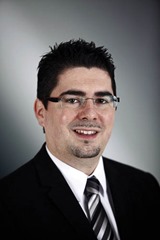On the move in Vienna
 A dense network, high speeds and a simple marketing strategy have contributed to Vienna’s success in public transport. Mathias Cremer, from the city’s transport authority, shared its lessons at Transport Ireland.
A dense network, high speeds and a simple marketing strategy have contributed to Vienna’s success in public transport. Mathias Cremer, from the city’s transport authority, shared its lessons at Transport Ireland.
High parking charges and a dense, integrated public transport network have led to Vienna being hailed as a success story in this field. Mathias Cremer works in the Operations Division of the Vienna Transport Authority (Wiener Linien) and explained the progress being made to delegates at the Transport Ireland conference.
The introduction of a €2 per hour parking fee in the city centre made public transport more attractive in comparison. The number of journeys increased from 875 million in 2011 to 907 million last year. Ticket revenues rose from €458 million to €484 million over the same period.
The authority runs an underground line alongside tram and bus routes and also operates park-and-ride and bike-and-ride facilities to ease congestion.
“An increasing ability to plan and [a] raise in speed are key factors in our transportation system,” Cremer stated.
Wiener Linien has operated a single ticket system, covering all modes of public transport, since 1993. Two years later, it introduced radio-controlled traffic lights. Two hundred and forty are now in place: “When a bus or tram is coming, it travels very fast so you don’t have long to wait.”
‘Semi-traffic lights’ are usually unlit but turn yellow or red when a tram is approaching. ‘Tram only’ time slots at junctions allow trams to proceed without cars turning into their lanes. ‘Bulge’ road markings take up the central reservations in the road at bus and tram stops; cars cannot pass buses until all passengers alight.
Smaller version of the ‘bulges’ are used to separate tram and car traffic. Where space is limited, one lane of the road is reserved for trams and the other for cars.
On increasing infrastructure for cycling, Cremer remarked: “Please make it additional and do not match public transport with bikes because this is a problem we have in Vienna.” The city authorities also want to free more space for cycling “and if the space is limited, the politicians like to take it from the public transport more than from the individual car transport.”
A mobile app for passengers (qando) has been providing real-time information to iPhone and android phones since 2006. Wiener Linien is now aiming to improve the service in four areas:
• extending the transport offer;
• quality and comfort;
• information (developing qando); and
• security.
The first area involves the expansion of underground lines, new tram lines and taking over all urban bus lines. Improved quality and comfort involves low floors on vehicles, air conditioning and increased travel speed. Security involves the roll-out of continuous underground vehicles, video surveillance and mobile station managers, mainly to assure older people.
One euro per day
Wiener Linien wants its business model to be the ideal basis for ‘comprehensive mobility services’. Its future plans involve an integrated multi-modal system for information, booking and payment and additional e-mobility offers e.g. online booking for car-sharing and bikes.
The authority is owned by the city and has a public service obligation to provide transport services, which started in 2002 and lasts until 2016. “We are an integrated service provider so we are planning our own network,” Cremer explained. “We make the schedules, we co-ordinate it, we make marketing and sales [and] earn all revenues and ticket incomes.”
Wiener Linien’s budget is divided into three parts:
1. a fixed amount for operational expenses;
 2. an annually adjusted capital supply budget for infrastructure investment; and
2. an annually adjusted capital supply budget for infrastructure investment; and
3. an investment fund for underground construction.
The first two parts are entirely funded by the City of Vienna. The last one receives 50 per cent funding from the city and
50 per cent from the Austrian Government.
The number of annual tickets has “very much increased because we decreased the fee from nearly €500 a year down to €365.” This “one euro per day” policy, covering all modes of public transport, has proved to be a good marketing strategy. It compares well to €1,416 per year in Dublin and the equivalent of €1,246 per year in London.
“It was a risk,” Cremer admitted. “We negotiated for a long time with the politicians and they guaranteed us that if we have a decrease of incomes, we [would] get a special subsidy but we had that much more annual tickets without losing the number of monthly tickets or day tickets.”
Geography and history
Vienna has 1.7 million residents and covers an area of 415 km2. Only 58 per cent of the whole city area is reached by public transport as it includes a large amount of parkland. However, public transport routes do reach 99 per cent of schools and 96 per cent of households and workplaces.
Public transport in Vienna dates back to the first horse tram in 1865. Private tram companies were taken over by the city authorities in 1903 and the system, including rail lines, was electrified in 1925. From 1949, public transport was run by the Wiener Stadtwerke, a group of utility companies owned by the city administration. The first underground line opened in 1978 and the Stadtwerke became a stock corporation in 1999.





